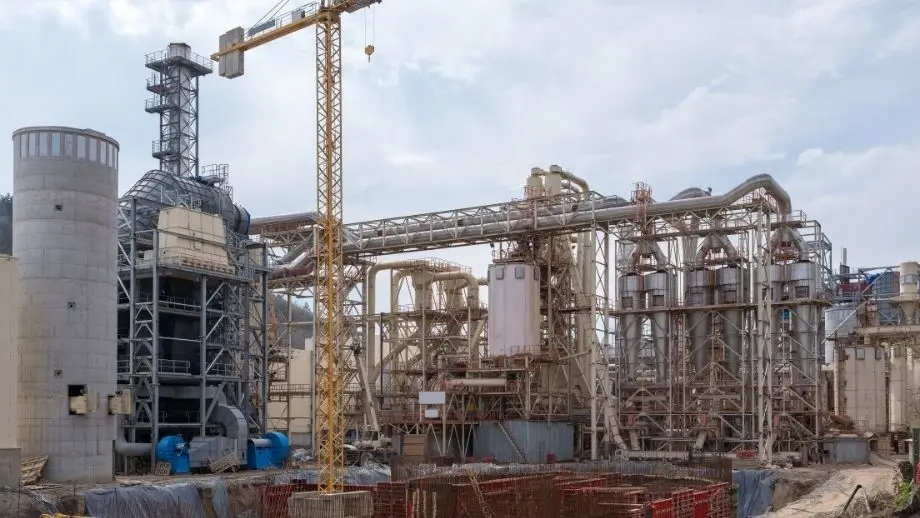Why you should Monitor Fugitive Dust in your Plant
2 September 2015

Here, Auburn Systems, dust emissions and process monitoring product manufacturer, talk about why you should monitor fugitive dust in your plant in their second guest blog. Their previous blog looked at effectively using bag leak detection systems in food manufacturing plants.
When it comes to dust, usually plant managers, operators and maintenance personnel are focused solely on monitoring and controlling dust exhausted from their dust collection systems into the open atmosphere. However, fugitive dust emissions near and within a plant should also be of concern as they pose a number of dangers to the plant, its products, and its workers. In order to controlling fugitive dust emissions plant personnel need to be aware a problem exists, and this can be achieve by monitoring fugitive dust levels throughout the facility by means of triboelectric dust detectors.
What are the Dangers of Fugitive Dust?
Damage to Equipment – Many pieces of equipment in an industrial facility are costly capital investments, failing to protect them from damage would be a massive waste.
Contamination of Manufactured Products – Can contaminate manufactured products that render them a loss (e.g. manufacturing of food, pharmaceutical, or electronic products).
Loss of Manufactured Products – In some cases the product is the dust itself (in chemical and pharmaceutical applications) and monitoring fugitive dust is important to ensure that product isn’t being lost in processing, and that packaging isn’t defective (leaking.)
Safety Hazard For Workers – Preventing worker exposure to hazardous airborne dusts is a vital safety concern in many facilities. This applies even with non-hazardous materials/dusts like wood and food per OSHA standards. Facilities must provide a safe, dust-free environment for their workers or else be subject to fines and citations as well as potential lawsuits.
Combustible Dust Hazards – From 2008 to 2012 alone, the US Chemical Safety Board documented 50 combustible dust accidents that led to 29 fatalities and 161 injuries. In addition to the harm to workers, many of these incidents left entire buildings destroyed and forced companies to shutdown permanently. Facilities must carefully monitor primary emissions sources but also secondary sources (i.e. fugitive dust) as they also contribute greatly to combustible fires and explosions.
In recent years, combustible dust hazards in facilities in the US and elsewhere are being aggressively targeted by safety inspectors. Federal workplace safety regulator OSHA has implemented a Combustible Dust Emphasis program, under which its inspectors have begun issuing citations with enormous fines for perceived dust hazards under the General Duty clause. This effectively enables inspectors to issue citations for any perceived dust hazards with no specified limit to the severity of the punishments handed out (some recent cases included fines in excess of one million USD)
Ambient dust can accumulate on elevated surfaces such as rafters, overhead walkways, on ledges or on top of machinery. It can then provide fuel for both primary or secondary dust conflagrations. As little as 1/4 inch of buildup can pose a hazard. It can also accumulate on floors, behind machinery and other places where it can pose additional fire hazards. Once an area is exposed to fugitive dust emissions it is very difficult to remove, requiring many man-hours or even necessitating the hiring of an outside industrial cleaning firm.
Of course fugitive dust detection is one tool to be incorporated as part of a comprehensive dust control, safety and risk mitigation plan. Don’t assume that fugitive dust detection, by itself, will prevent hazzards and accidents!
How to Monitor Fugitive Dust with Triboelectric Detectors
Auburn Systems has developed a special venturi style configuration for our triboelectric detectors so that it can be used to monitor dust levels in the areas throughout the facility. The assembly uses compressed air to create a venturi effect, drawing ambient air through the sensor and thus generating a triboelectric signal even when there is no airflow in the room.
By keeping track of dust emissions throughout the plant in real-time, plant personnel can be alerted before it becomes a serious hazard and take steps to remedy the underlying cause of the dust excursion. While a triboelectric dust detector should not be considered a combustible dust prevention or protection device, it can be used as a form of predictive and preventive monitoring, providing warning of impending problems (long before a buildup of fugitive dust is apparent to the naked eye). This would allow for the scheduling of non-disruptive maintenance to remedy the problem.









